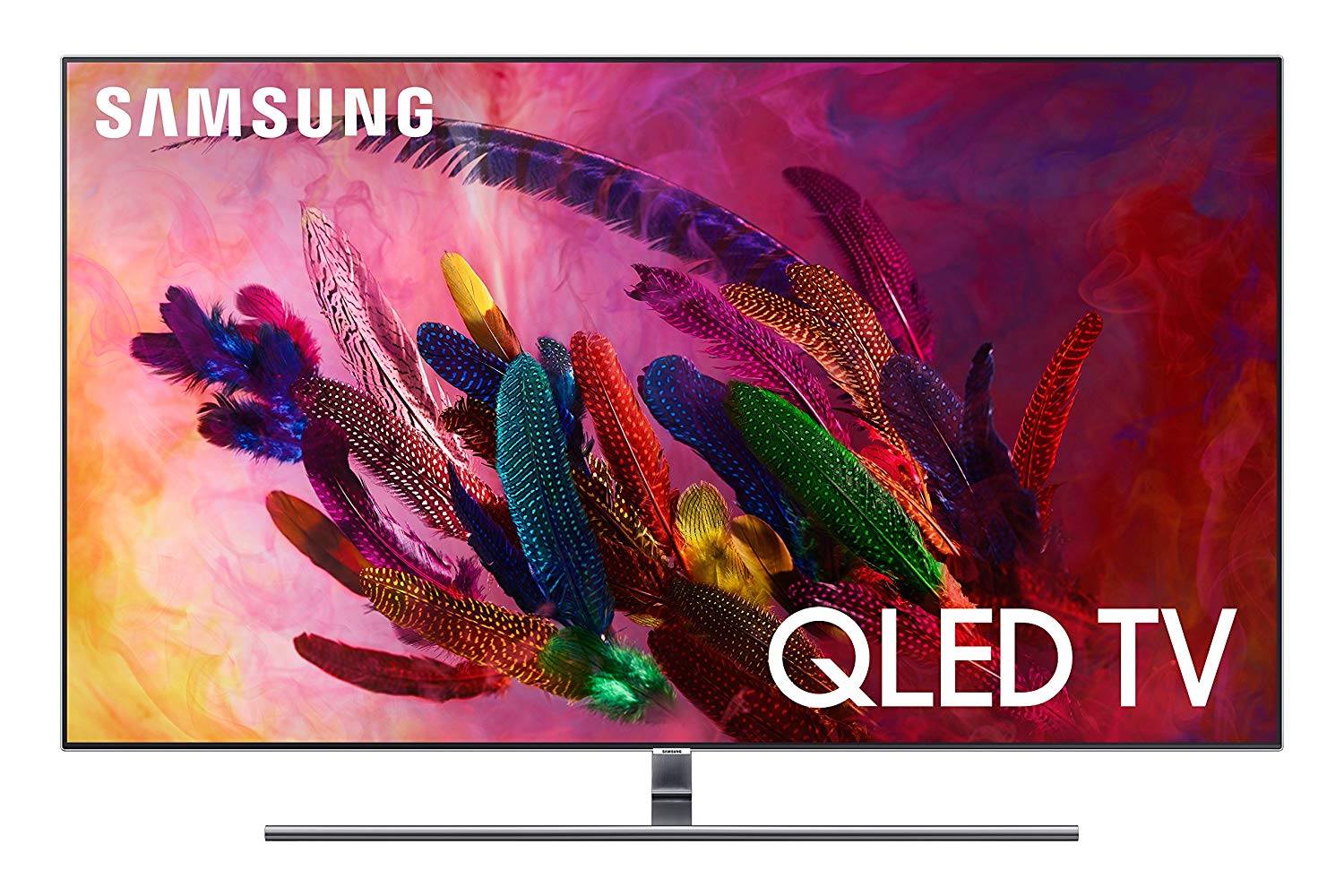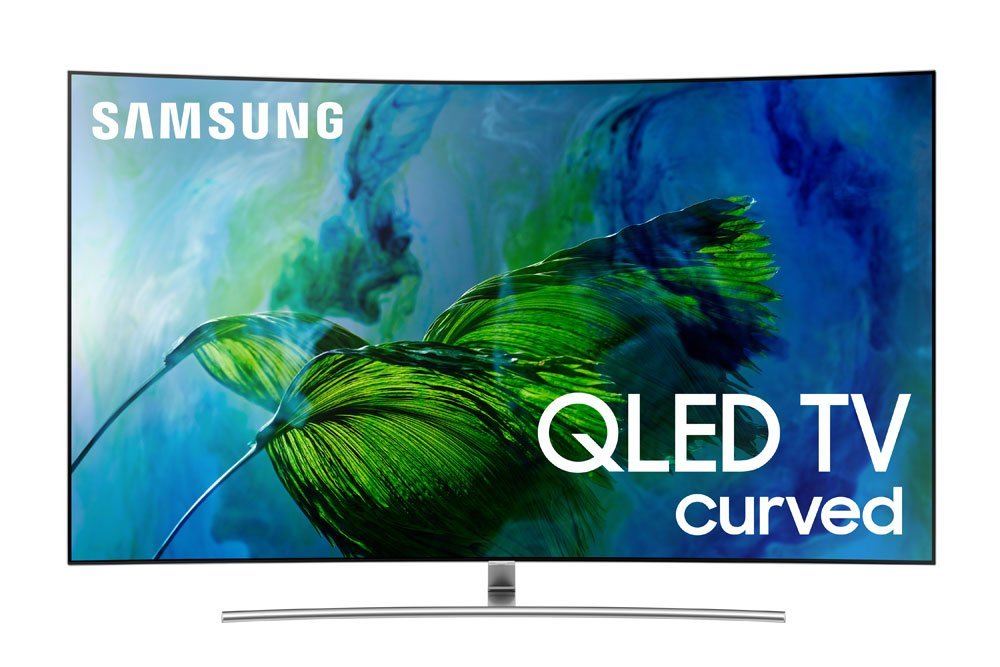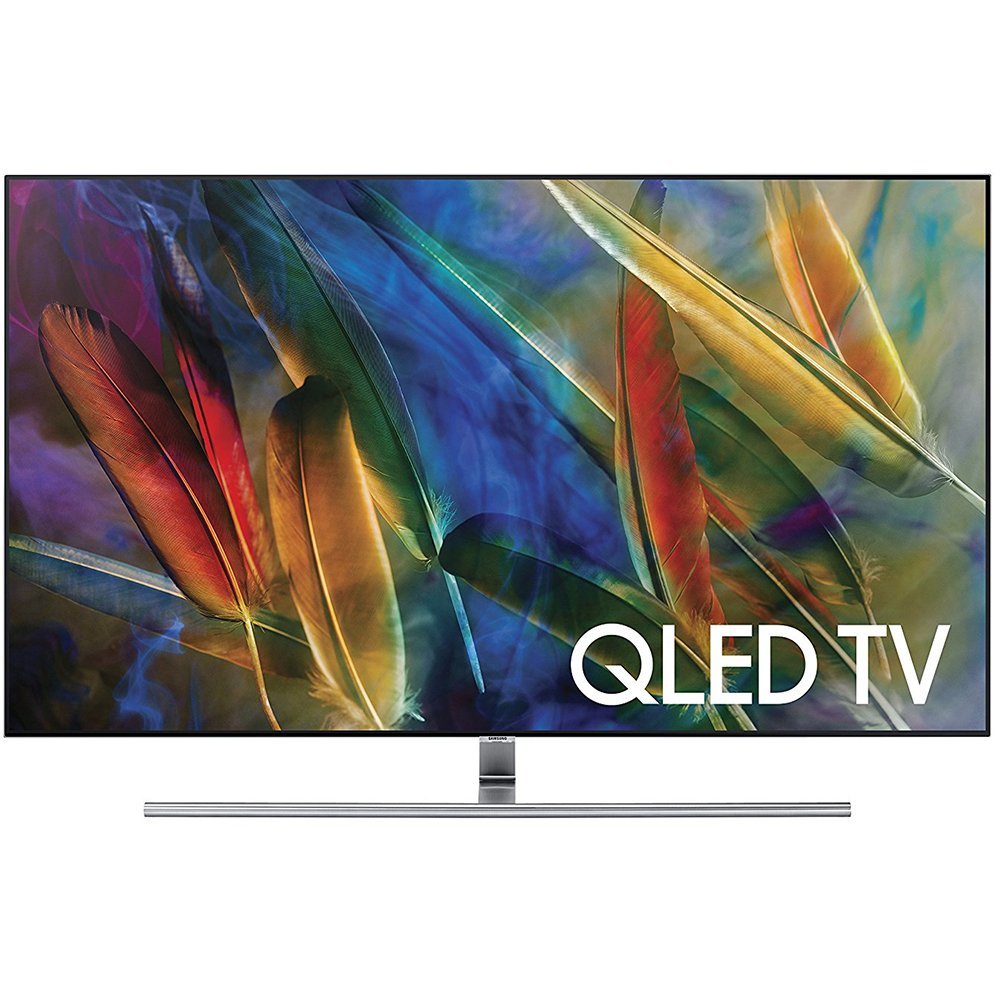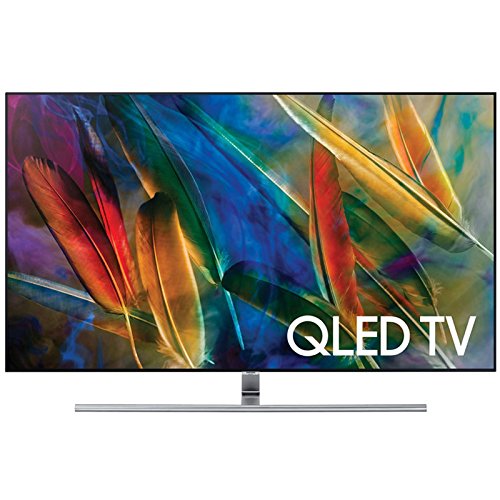Best Quantum Dot (QLED) TVs 2018 – Ultimate Buyer’s Guide
We live in a world where technology is changing quickly and the latest cutting edge tech for screens rolls out while our older screens still look amazing. Such is the case with Quantum Dot LED (QLED) technology that is being rolled out in both televisions and computer monitors. Luckily for you we’ve done the leg work to get you all the answers you need on this new style of TV that is hitting the market. In our buyers guide we’ll go over all the major points that you should consider when looking at a new QLED television. Then we’ve found five offerings from Samsung that are the best QLED TVs on the market today.
Quantum Dot TV Buyers Guide 2018
We’ll start off by going over the basics of what a QLED TV is and why you should choose one as your next television purchase. So without further delay, let’s dive into it.
1. What is a QLED TV?
QLED is a term that stands for Quantum Dot LED, and it was trademarked and first showcased at the 2017 CES by Samsung. While they hold the trademark on the name, they are hoping that other companies will accept this as the new path for even better televisions and other screens. This design uses dots that range from 2 nanometers to ten nanometers, and that change in size means that they will produce different colors of light. The company claims that this set up will led to more saturated colors and a better viewing experience by giving you a more defined set of primary colors.
One thing to consider is that quantum dots are not exactly a brand-new breakthrough. As it currently stands many of the premium LED televisions on the market are using quantum dots in at least some manner. Samsung is arguing that this technology should be further embraced and marketed in response to companies putting out OLED televisions.
Section Summary
- Quantum Dot technology
- Brought out by Samsung at 2017 CES
- Differing size dots produce better colors
- Non-emissive Technology
2. QLED vs. OLED: What’s the difference?
Of course, the first thing that you might think of when you see QLED is did they mean OLED? These are completely different technologies that are both working to improve on the current LED/LCD screens that are on the market today. For a while LG was the only one to offer OLED TVs and the price tag kept many from adopting them, but Sony has been putting forth their line of OLED TVs which will drive the price down.
If you start to compare and contrast these two television designs you will see that the first and biggest difference may be that OLED is an emissive solution, where QLED is not. This means that QLED still requires being backlit, while OLED screens do not. Losing the backlighting can drop the energy needs of a television.
Another area to compare the two is the blacks that their screens can produce. Since QLED screens are still backlit, even if they are showing black and can dial back how much power is going to those LEDs, there is still some amount of light bleed. While the QLED screens do a much better job than current LED solutions, the OLED is the clear winner here. When black is needed for part of an OLED screen there simply is no light produced in those areas.
The next consideration would be in the area of brightness. While the total black of the OLED might add some argument for a better overall contrast, without the backlighting these screens don’t have the same level of brightness that you can get from the QLED option. And since the use of the quantum dots allows these TVs to crank up the brightness without losing saturation, we feel that a QLED option is a better choice here.
Finally, we’ll consider the overall life of the screen. LG has stated that it would take you 54 years of watching 5 hours a day to see the brightness of their OLED TV drop by half. That is impressive, but since we’ve only had 5 years of the TVs being on the market it is hard to say if that is true. Since QLED is the next step of LED televisions, we have a better idea that they can last for a while, giving them the edge at this point
Section Summary
- OLED produce a better black
- QLED has a better brightness & saturation
- QLED have a better track record on life of the screen
Benefits of Quantum Dot/QLED TVs
The major benefits of purchasing a QLED television really come from what you are changing from. If you are stepping up from a high definition television to the Ultra HD range, you’ll clearly see a boost in sharpness and quality of picture. And with the dots doing their work you’ll find that you are getting a better black from you old set while still getting more color saturation for an amazingly good picture quality. And that brightness means that the picture is a lot easier to view during the day when you might get some sun glaring on the screen.
Section Summary
- QLED offers improvements over current LED
- QLED gives great color saturation
Should you buy a QLED TV?
The question now turns to is this the right time for you to purchase a QLED television. At the end of the day you are truly the one that can make this call, but there are some things to ponder. If you are merely looking for a new TV to watch standard definition shows on, it might not be worth the extra expense of purchasing a QLED option. However, if you are looking to watch the latest Ultra HD blu-rays or simply future proof yourself so you will be ready in the future, this could be a great time to look into a QLED option.
With the improvements made over the current tech of LED TVs that are easily available, you’ll see quite a jump in improvement if this is the time to step up to the latest and greatest.
Section Summary
- Good option for Ultra HD viewing
Best QLED TVs 2018
1. Samsung QN65Q8C
Features
The first offering that we have found is the Samsung QN65Q8C. As you can probably tell from the model number this is a 65 inch television. With the quantum dot technology that Samsung is employing you’ll get full color volume, even at the brightest screen levels. And the TV is set up to keep things looking clean, as you can connect to your other devices with Samsung’s Invisible Connection optical wire. The included one remote not only will control the TV and its various smart apps but can also connect to your blu-ray player and cable box, for some models you don’t even need to do anything to get them synced up. The C at the end of the model number lets you know that this is the curved model.
Drawbacks
The main drawback for this is the price. With this model coming in at about $2,300 it might not be overly expensive, but is the picture good enough to justify the jump from the current range of televisions.
2. Samsung QN65Q7FN
QN65Q7FN
Features
When you compare the model numbers of the offering above and this one you’ll see that the only real change is that it ends in 7F. This signifies the flat screen model of the 65 inch QLED TV. This allows you to wall mount your TV if desired. All the other features such as the remote, color volume and such are available in this model.
Drawbacks
While not as expensive as the curved model, this one will still run you about $2,200. This could be viewed as a little bit too much for a 65 inch TV.
3. Samsung QN55Q8C
Features
Upon viewing the product number, you’ll find that this is the 55 inch version of Samsung’s QLED line. The only differences here are the screen size and the price. All other features mentioned above come with this model as well.
Drawbacks
Again, the main drawback is the price. At $1,700 this is getting to be more reasonable, but there are lower cost Ultra HD curved screens on the market, some that are even using the quantum dots.
Samsung QN55Q7F
Features
As with the 65 inch models, here we also have the flat version, this means you can mount your TV on the wall and it also gives a better range of viewing angles for the 55 inch line.
Drawbacks
At $1,500 this is still a sizable price tag for an Ultra HD TV that is only 55 inches.
Samsung QN75Q7F – Best QLED TV 2018
Features
Finally, we have the largest model of the line. For this size we felt that the flat model was really the only one that made sense, as at this size a curved screen can be a little bit unwieldy and hard to find a place for. But the flat model can easily be mounted on a wall for an amazing viewing experience.
Drawbacks
While it may be down from $4,500, a price tag of about $3,300 is still a good chunk of change to put out if you are still debating if QLED is a better option than an OLED television.
Conclusion
While there are a number of televisions that are on the market employing quantum dot technology, only Samsung is embracing the difference enough to really call their new line QLED models. These can give amazing color saturation even at the top brightness settings and are easy to make in any size. However, the question is still up for debate if this or OLED is the way that televisions will go. Either way, these are the top contenders on the market at this point. We do expect to see prices drop as other companies begin to put out more QLED TVs.
Do you have some experience with any of our picks? We’d love to hear about it in the comments section below.














